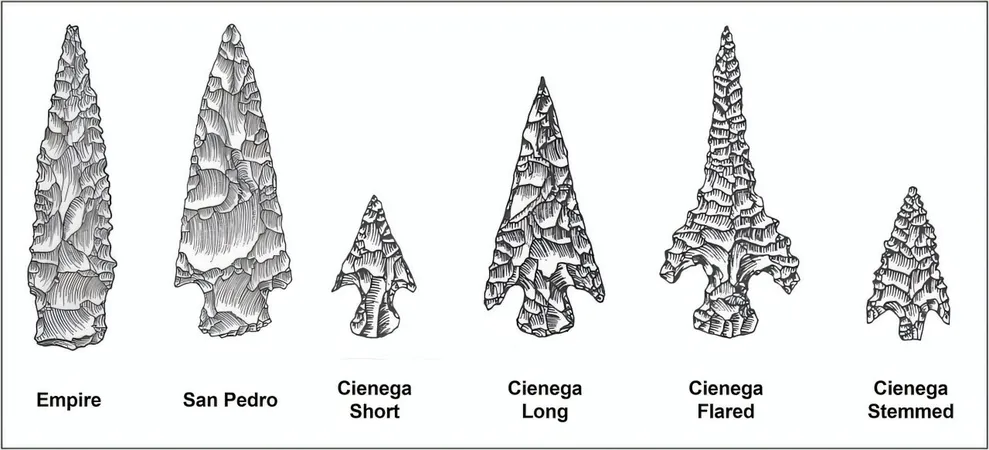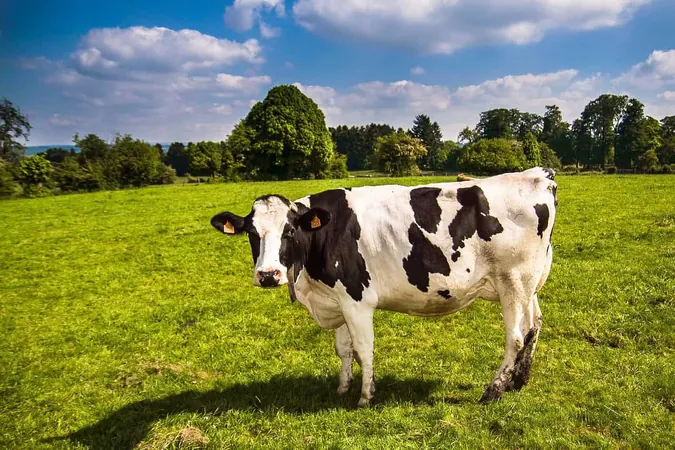
Unraveling the Mysteries of Maize Migration in the Sonoran Desert: Insights from Early Farmers
2025-06-26
Author: Ming
Discovering Early Agricultural Patterns
A groundbreaking study by Dr. James Watson and his team is shedding light on how small-scale migrations shaped the Sonoran Desert during the Early Agricultural Period (EAP). This research delves deep into changes in projectile points, mortuary customs, and bioarchaeology, providing a fresh perspective on the arrival of maize in this unique desert environment.
The Great Maize Debate
Published in *American Antiquity*, Dr. Watson’s study grapples with an intriguing question: When did maize really make its debut in the Sonoran Desert? Two main theories have emerged. The first posits that maize and other staple crops like beans and squash were brought to the Tucson Basin approximately 4,500 years ago by migrating farming communities from Mesoamerica. The second theory suggests that these crops gradually trickled in through trade routes and cultural exchanges, slowly integrating into the lifestyles of local hunter-gatherers.
Tracking Migration Through Archaeology
Dr. Watson's research employs three distinct archaeological data sources to paint a clearer picture of population dynamics and migration patterns in the region linked to maize cultivation. "Maize found its way into the Sonoran Desert during a period of ample water supply, facilitating its proliferation and encouraging investment in agriculture," Dr. Watson notes.
Projectile Points: Clues from the Past
Archaeological finds revealed four different types of projectile points from this period, two of which are particularly telling: Empire and San Pedro points. San Pedro points feature broad blades with notches, while Empire points are characterized by their long, serrated blades. Interestingly, the Las Capas site predominantly showcased Empire points, a detail that raises questions about potential migration and the adoption of local traditions by incoming populations.
Burial Customs: A Reflection of Identity
Variations in mortuary practices provide further insight into the cultural tapestry of the time. Local burials favored flexed positions with minimal use of pigmentation, whereas non-local burials exhibited a striking diversity in postures and employed more vibrant burial goods, suggesting a blend of cultural influences and identities.
Genetic Insights into Migration Patterns
The bioarchaeological aspect of the study reveals another layer of complexity. Male populations demonstrated higher genetic diversity, likely influenced by exogamous marriage practices, which could be a driving factor behind male migration trends for mate selection. This evidence collectively indicates that small-scale migrations, particularly male-dominated, were pivotal in the northward expansion of agricultural practices centered around maize.
A Unique Chapter in Agricultural History
While Dr. Watson remains cautious about drawing parallels to other regions, he notes the distinct migration patterns associated with maize in the Sonoran Desert appear to be uniquely different from those in other parts of northern North America during this timeframe. Interestingly, there’s also a suggestion that some of these early farmers later migrated to the Colorado Plateau, playing a role in the emergence of the Western Basketmaker II era.
As this research unfolds, it offers a rich narrative of human adaptability and cultural exchange in a challenging environment, forever changing our understanding of early agricultural societies.




 Brasil (PT)
Brasil (PT)
 Canada (EN)
Canada (EN)
 Chile (ES)
Chile (ES)
 Česko (CS)
Česko (CS)
 대한민국 (KO)
대한민국 (KO)
 España (ES)
España (ES)
 France (FR)
France (FR)
 Hong Kong (EN)
Hong Kong (EN)
 Italia (IT)
Italia (IT)
 日本 (JA)
日本 (JA)
 Magyarország (HU)
Magyarország (HU)
 Norge (NO)
Norge (NO)
 Polska (PL)
Polska (PL)
 Schweiz (DE)
Schweiz (DE)
 Singapore (EN)
Singapore (EN)
 Sverige (SV)
Sverige (SV)
 Suomi (FI)
Suomi (FI)
 Türkiye (TR)
Türkiye (TR)
 الإمارات العربية المتحدة (AR)
الإمارات العربية المتحدة (AR)